MaryAnn Bernal's Blog, page 166
July 6, 2015
Ruins of luxurious imperial Roman villa to share its majesty once again
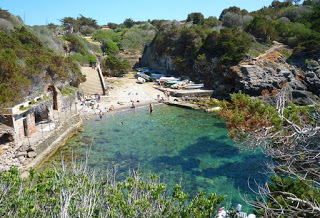 Ancient Origins
Ancient OriginsThe ruins of an imperial Roman luxury villa that had heated floors, lavishly decorated rooms and a dramatic marble staircase leading down to a beach, is ready to share its majesty with the world once more. The ancient villa has reopened to the public after 15 years. The villa, on an island off Tuscany, Italy, has been under renovation since 1989, but red tape has slowed its reopening.
Villa Domitia is on the 4.83 km (3-mile-long) island of Giannutri in the Tuscan Archipelago. Discovery News describes it as a rocky crescent of an island inhospitable to humans because of a lack of water. In ancient times laborers carried water from the mainland to the luxury villa.
"The villa was built on a harsh, uninhabited site," said Paola Rendini, an archaeological superintendent in Tuscany, to Discovery News. "There is no water spring on the island, and raw materials had to be carried from the mainland. It was a huge task. Giannutri was the first island after Ostia, the port of Rome, thus relatively easy to reach. The villa was likely used by the emperors Domitian, Trajan and Hadrian.” These men ruled Rome between 81 and 117 AD.
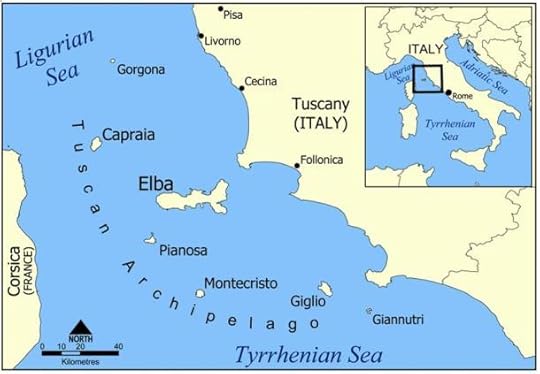 Map of Tuscan archipelago with Giannutri at the southernmost end. The island has no spring, so in ancient times rainwater was collected in cisterns. Laborers also carried water from land to the Roman aristocracy who visited the villa on the island. (Norman Einstein map/Wikimedia Commons)Today the island, the southernmost in the Tuscan Archipelago, is still largely privately owned. It is home to seagulls and a small number of villa owners, who catch rainwater in ancient cisterns and carry water from the mainland. The Italian Ministry of Cultural Heritage has the villa and its annexes under its control.
Map of Tuscan archipelago with Giannutri at the southernmost end. The island has no spring, so in ancient times rainwater was collected in cisterns. Laborers also carried water from land to the Roman aristocracy who visited the villa on the island. (Norman Einstein map/Wikimedia Commons)Today the island, the southernmost in the Tuscan Archipelago, is still largely privately owned. It is home to seagulls and a small number of villa owners, who catch rainwater in ancient cisterns and carry water from the mainland. The Italian Ministry of Cultural Heritage has the villa and its annexes under its control.“Today the ruins represent a bright yet fragmented evidence of the once sumptuous villa, showing impressive flights of steps, granite columns, intricately-sculpted capitals, pieces of precious marbles and long stretches of thick walls in opus reticulatum (small squared stones laid diagonally to form a net-like pattern). Spreading for about 10 acres, the villa was built on different terraces on a property which most likely belonged to the prominent Domitii Ahenobarbi, Nero’s family,” Discovery wrote.
“Although the villa has been the focus of several restoration and conservation campaigns since 1989, overlapping regulations have basically prevented its opening to the public, slowing procedures and interventions.”
 The residence had bedrooms and a large living room with a view of the sea built on three terraces around a courtyard or peristylium. The columns have Corinthian capitals. (Photo by Paola Agazzi / Rossella Lorenzi)Rendini said it was a luxury or otium (leisure) villa with many comforts, including cisterns that still collect rainwater for the island's residents, a heating system under the floor, two harbors and a facility for salting fish. The complex included slave quarters.
The residence had bedrooms and a large living room with a view of the sea built on three terraces around a courtyard or peristylium. The columns have Corinthian capitals. (Photo by Paola Agazzi / Rossella Lorenzi)Rendini said it was a luxury or otium (leisure) villa with many comforts, including cisterns that still collect rainwater for the island's residents, a heating system under the floor, two harbors and a facility for salting fish. The complex included slave quarters.The villa was rediscovered in 1928 when a flight of marble steps going to the sea (see photo at top) was excavated by woman visiting the island and an archaeologist. They also found rooms with frescoes, mosaics and polychrome marbles. One mosaic showed a marine vista with dolphins and another showed the mythological figures Theseus and Ariadne in the minotaur's labyrinth at Knossos. These artworks have been moved to the archaeological superintendency's storerooms, but Rendini wants to open a museum on the island.
The island may be visited by 75 people per day in three groups of 25 at a cost of 8 euros ($9) per person.
Featured image: The Roman port on the island of Giannutri off the coast of Tuscany, where the ruins of a leisure villa owned by Nero's family is being opened to the public. The villa has been under restoration and conservation since 1989, but red tape has slowed the work and prevented the villa's opening to the public. (Photo by Aldo Ardetti/ Wikmedia Commons )
Published on July 06, 2015 06:42
History Trivia - Richard III crowned King of England
July 6

1189 King Henry II of England died and was succeeded by his son, Richard I, the Lionheart.
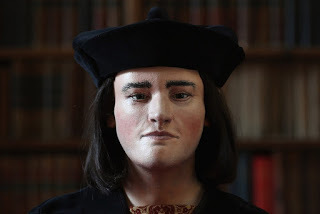
1483 Richard III was crowned King of England.
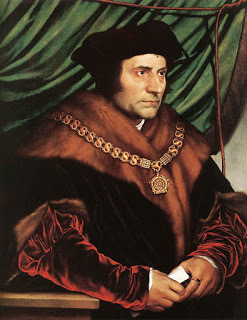
1535 Sir Thomas More was executed for refusing to accept Henry VIII as head of the Church of England.

1189 King Henry II of England died and was succeeded by his son, Richard I, the Lionheart.

1483 Richard III was crowned King of England.

1535 Sir Thomas More was executed for refusing to accept Henry VIII as head of the Church of England.
Published on July 06, 2015 02:00
July 5, 2015
History Trivia - Scotland and France form the Auld Alliance
July 5

649 Pope Martin I began his papacy.
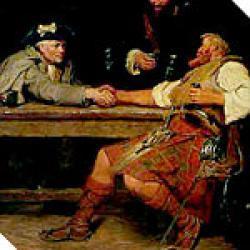
1295 Scotland and France formed the Auld Alliance against Edward I of England. The terms of the treaty stipulated that if either country was attacked by England, the other country would invade English territory.

649 Pope Martin I began his papacy.

1295 Scotland and France formed the Auld Alliance against Edward I of England. The terms of the treaty stipulated that if either country was attacked by England, the other country would invade English territory.
Published on July 05, 2015 01:30
July 4, 2015
Roberto Scarlato presents The ACX Chronicles - Introductions and Obstacles

In this episode, I explain how I stumbled upon ACX and how people often told me I oughta do something with my voice.
Published on July 04, 2015 06:44
Fourth of July - Happy Birthday USA
Published on July 04, 2015 02:30
History Trivia - Saint Ulrich of Augsburg canonized
July 4
 993 Saint Ulrich of Augsburg (leader of the Roman Catholic Church in Germany) was canonized. He studied at the monastery school of St. Gall and received additional training under Adalbero, Bishop of Augsburg, who made him a chamberlain. He was appointed Bishop of Augsburg by King Henry in 923.
993 Saint Ulrich of Augsburg (leader of the Roman Catholic Church in Germany) was canonized. He studied at the monastery school of St. Gall and received additional training under Adalbero, Bishop of Augsburg, who made him a chamberlain. He was appointed Bishop of Augsburg by King Henry in 923.
 1054 Brightest known super-nova (Crab Nebula) started shining, being visible for 23 days.
1054 Brightest known super-nova (Crab Nebula) started shining, being visible for 23 days.
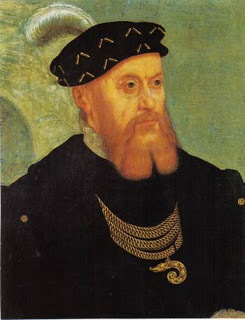 1534 Christian III was elected King of Denmark and Norway in the town of Rye.
1534 Christian III was elected King of Denmark and Norway in the town of Rye.
Published on July 04, 2015 02:00
July 3, 2015
Homer's Odyssey, presented by Sebastian Lockwood - July 12 and July 19, 2015- 3:00 p.m. - Registration required
 Homer in Greenfield: Storytelling Odysseus followed by a discussion - winged words!
Homer in Greenfield: Storytelling Odysseus followed by a discussion - winged words!Location: Stephenson Memorial Library761 Forest Road Greenfield, NH 03047Wensberg Room(603) 547-2790 Traveling bard Sebastian Lockwood narrates The Briton and the Dane - a story of intrigue, treachery and betrayal in Anglo-Saxon Britain
Published on July 03, 2015 08:15
History Trivia - Saladin victory at Horns of Hattin
July 3
 987 Hugh Capet was crowned King of France, the first of the Capetian dynasty that would rule France until the French Revolution in 1792.
987 Hugh Capet was crowned King of France, the first of the Capetian dynasty that would rule France until the French Revolution in 1792. 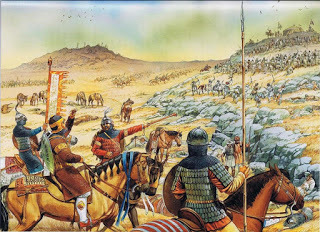 1187 Saladin, Sultan of Egypt and Syria, destroyed Jerusalem's crusader army at the Horns of Hattin, Palestine.
1187 Saladin, Sultan of Egypt and Syria, destroyed Jerusalem's crusader army at the Horns of Hattin, Palestine.
 1528 Capuchin Order received papal approval in a bull by Pope Clement VII.
1528 Capuchin Order received papal approval in a bull by Pope Clement VII.
Published on July 03, 2015 02:00
July 2, 2015
Book Launch - The Standing Stone – Silence is Broken by Wendy Steele
A new book…a new beginning Wendy Steele Blog
Today is launch day for The Standing Stone – Silence is Broken. This is the second book in the Standing Stone series. It’s longer, faster paced and features the Goddess Ishtar.

Ishtar, or Innana, came into my life over 15 years ago when I picked up a book about goddesses in the children’s library and was inspired to paint her, my first ever water colour. Since moving to Wales, she has been a constant in my life and with her support and guidance, I’ve embarked on a new spiritual and emotional journey.
When I stand beneath the vast skies in rural Wales, the stars from her belt shine on me, reminding me that I’m part of an amazing universe. On wet Welsh days when the weather changes from torrential rain to sunshine in minutes, the rainbow necklace at her throat gives me hope, showering my life with a myriad of colourful blessings.
As Ishtar, the warrior goddess, I carry her with me always.
 Eight pointed star, one of the symbols of IshtarShe inspires me to dance and teach others, even if my classes are depleted. She inspires me to share my stories, even when my book sales are low.
Eight pointed star, one of the symbols of IshtarShe inspires me to dance and teach others, even if my classes are depleted. She inspires me to share my stories, even when my book sales are low.
Every day can be a new beginning with the goddess and today begins the life of a new story, sent into the world to be shared.
Embrace Ishtar in your life today.
Amazon UK
Amazon US

Today is launch day for The Standing Stone – Silence is Broken. This is the second book in the Standing Stone series. It’s longer, faster paced and features the Goddess Ishtar.

Ishtar, or Innana, came into my life over 15 years ago when I picked up a book about goddesses in the children’s library and was inspired to paint her, my first ever water colour. Since moving to Wales, she has been a constant in my life and with her support and guidance, I’ve embarked on a new spiritual and emotional journey.
When I stand beneath the vast skies in rural Wales, the stars from her belt shine on me, reminding me that I’m part of an amazing universe. On wet Welsh days when the weather changes from torrential rain to sunshine in minutes, the rainbow necklace at her throat gives me hope, showering my life with a myriad of colourful blessings.
As Ishtar, the warrior goddess, I carry her with me always.
 Eight pointed star, one of the symbols of IshtarShe inspires me to dance and teach others, even if my classes are depleted. She inspires me to share my stories, even when my book sales are low.
Eight pointed star, one of the symbols of IshtarShe inspires me to dance and teach others, even if my classes are depleted. She inspires me to share my stories, even when my book sales are low.Every day can be a new beginning with the goddess and today begins the life of a new story, sent into the world to be shared.
Embrace Ishtar in your life today.
Amazon UK
Amazon US

Published on July 02, 2015 09:25
History Trivia - Oliver Cromwell victory at Battle of Marston Moor
July 2
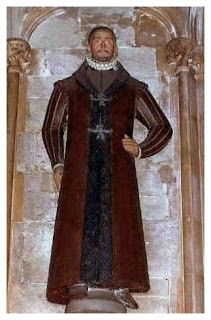
862 St. Swithun, Bishop of Winchester and royal counselor to Kings Egbert and Aethelwulf, died.
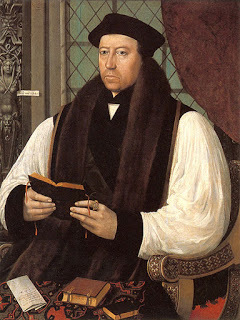
1489 Thomas Cranmer, leader of the English Reformation and Archbishop of Canterbury during the reigns of Henry VIII, Edward VI and, for a short time, Mary I, was born.
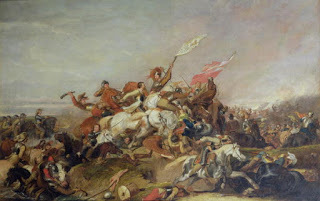
1644 Oliver Cromwell achieved his first major victory over Royalist forces at the Battle of Marston Moor.

862 St. Swithun, Bishop of Winchester and royal counselor to Kings Egbert and Aethelwulf, died.

1489 Thomas Cranmer, leader of the English Reformation and Archbishop of Canterbury during the reigns of Henry VIII, Edward VI and, for a short time, Mary I, was born.

1644 Oliver Cromwell achieved his first major victory over Royalist forces at the Battle of Marston Moor.
Published on July 02, 2015 01:30





